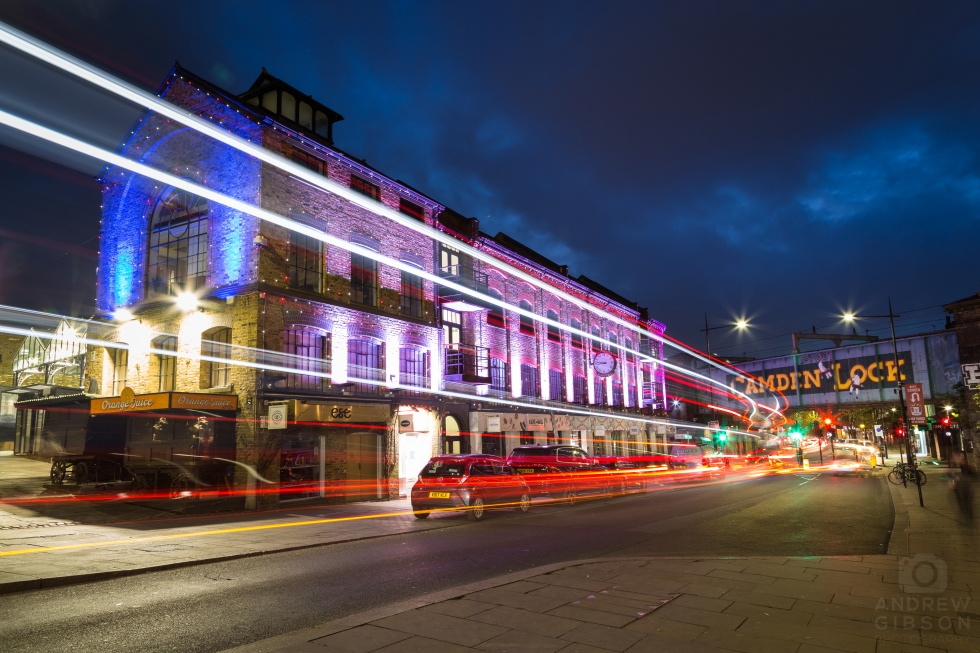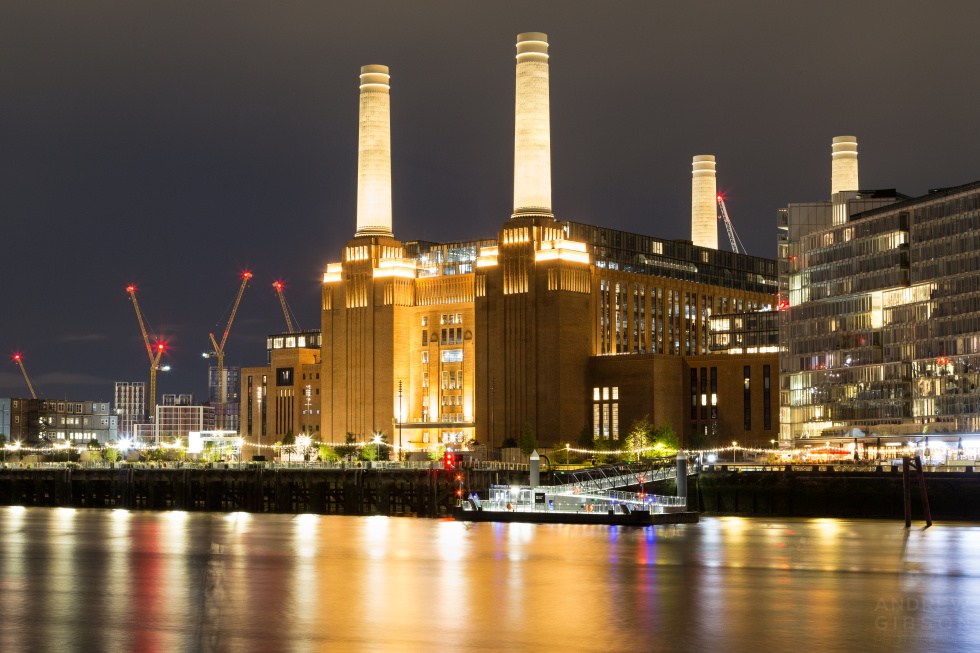If you’ve taken more than a passing interest in my work before you’ll know that the historic environment features heavily, and with a mix of fascination, sadness, wonder, frustration and sheer dismay I’ve explored it, celebrated it, and often watched it descend into oblivion beyond salvation. This time however I’ve been out looking at a few of London’s buildings that have been saved, and their futures secured.
The main image above isn’t one I was going to talk about but it was the starting point on this particular London journey and worth a mention in its own right. The now trendy Camden Lock sits beside the Regent’s Canal in an area once dominated by warehouses and gin distilleries. I was drawn to the scene really by the old railway bridge in the background and the lights of passing traffic but my subconscious doubtless made the historic association when I planned to stop here. It was one of those places where various passers-by and a nearby security guard all wanted a look at the back of the camera to see how it came out; I’ve never found London to be as stand-offish as it’s often (unfairly) reputed to be, but then almost the whole of Camden High Street was lingering with cannabis smoke so it’s perhaps hardly surprising in this case.
Moving along to the next location I followed the banks of the canal in the enveloping darkness, headed for Kings Cross and a set of redundant gas holders that have been retained to incorporate a set of apartment blocks and an urban park.
Gas holders 10, 11 and 12 once fed the St Pancras Gas Works, the largest of its kind in London. Built in 1860-67 and expanded in 1879-80 the three are joined by a common spine and manufactured gas right up to the end of the twentieth century when the works was decommissioned. They now feature apartment blocks that give more than a passing nod to their original telescopic interiors, safeguarding the structures and respecting the past while maximising space that comes at a premium and looking firmly to the future.
Adjacent to the apartment blocks is the largest of the structures, gas holder 8, having been dismantled and relocated from the other side of the St Pancras Basin and now containing a public park. It’s all very impressive.
Gas Holder Park as it’s now known is just a stone’s throw from another trendy new destination. Coal Drops Yard was exactly what you’d expect given the name, now repurposed with shops and eateries including this one inside the old coal office:
It all just seems to fit together, and London has a remarkable way of blending the old with the new, sitting different styles next to each other and what would be considered a crazy patchwork in any other city… but not here.
Let’s move over to the Tower Bridge area and take a look down the street known as Shad Thames, formerly the largest Victorian warehouse complex in the city. I’ve wanted to capture the impressive layers of this scene for some time but it’s always had scaffolding or something in the way. I didn’t think it would work this time either but here we are, golden light shining over the rooftops onto the yellow London bricks:
The main draw for me however was to revisit an old favourite nearing the end of a 30-odd year salvage saga and a multi-billion pound renovation: Battersea Power Station. You can finally walk round its new high street, and in fact you can take the tube to the impressive new underground station (Battersea Power Station Station?)
The most notable thing about it is just how bloody big it is, and how the surrounding buildings encroach to the extent that it’s hard to get a good shot of it close up. I did take some – in fact I managed to get site security permission to wander round freely capturing it – but eventually I decided to shoot it from the other side of Battersea Bridge.
Lets remind ourselves where it started: Here it is just before it early in 2013, from the Pimlico side of the Thames…
And now in May 2022, at the end of a very nice day spent outside the capital’s oldest wine bar, a fancy little cocktail bar fashioned out of an old underground public convenience on a traffic island, and some of London’s many historic pubs:
Like the original building this reworking is exemplary, a masterclass in repurposing as much as the power station itself was in architectural merit. And it belies the fact that at the start of the process half of the brickwork was missing, the rest was braced together and the chimneys needed a complete rebuild. It just needs the two coal cranes returning to the riverside following their own restoration to make it look as it should. I wrote a piece on the history of this Art Deco icon back in 2014, which you can read here if you like.
Everything about this building is magnificent, just like the others, just like all the historic bits of London and even that converted public convenience under the traffic island. It shows what you can do with a bit of imagination rather than knock it all down, it shows that there is a place where everything needn’t all look the same. The reality though, is that it’s hard to imagine this happening anywhere outside of London. Nowhere else in the country could you make the numbers stack up, nowhere else has the ambition or the capital to put behind doing this one after another, after another. But that’s what’s so great about the capital: it never ceases to amaze.






